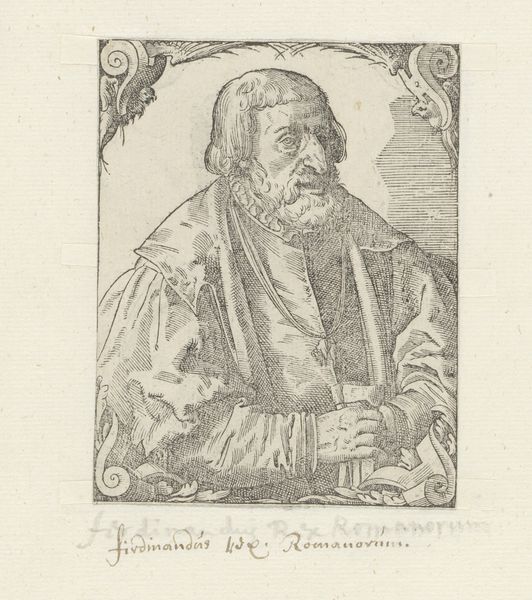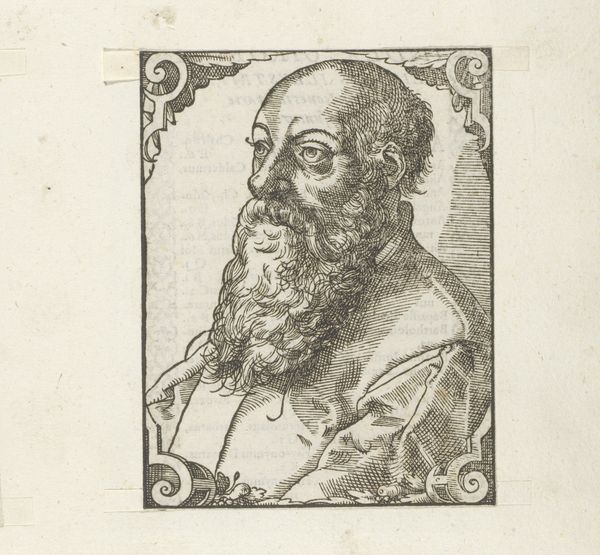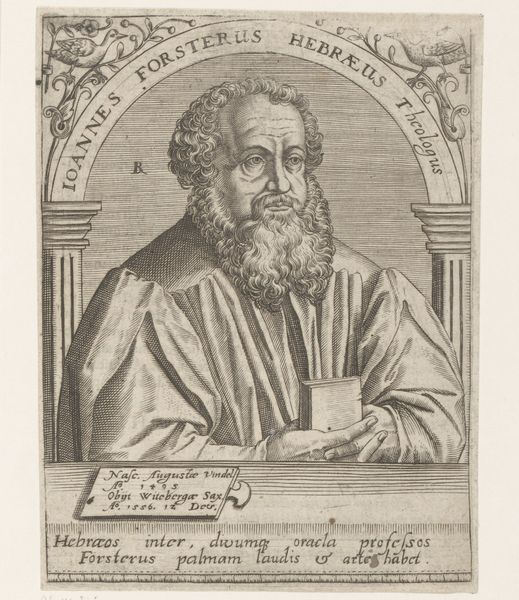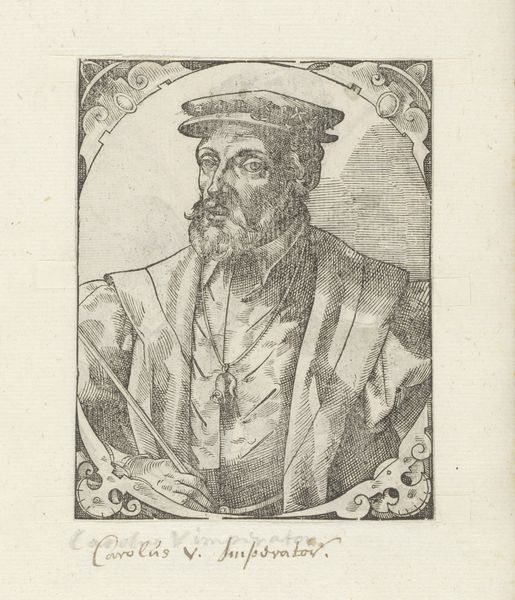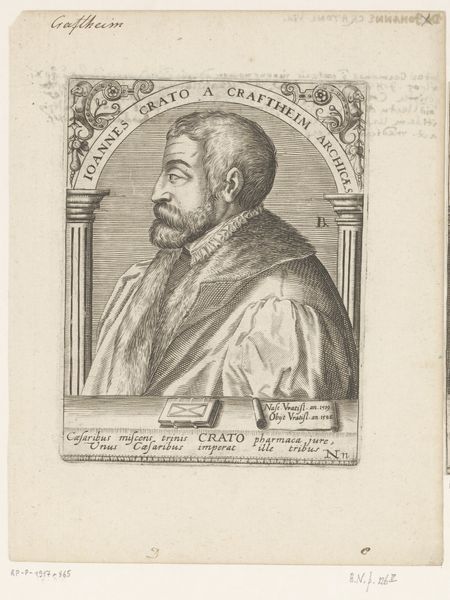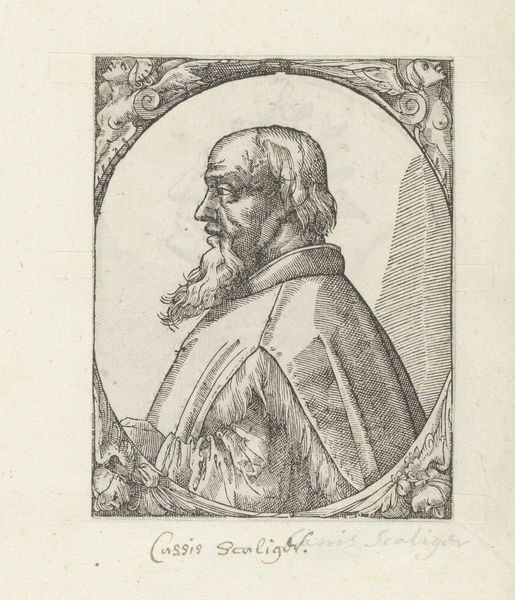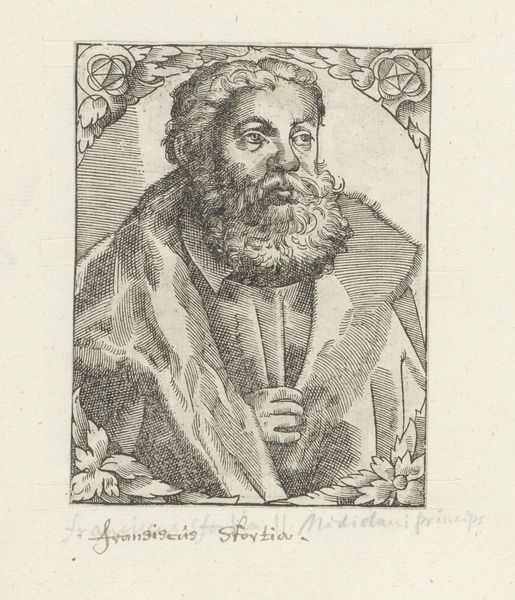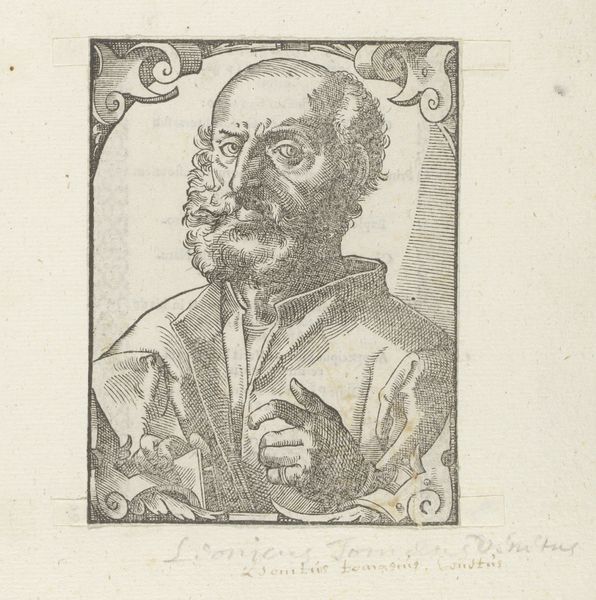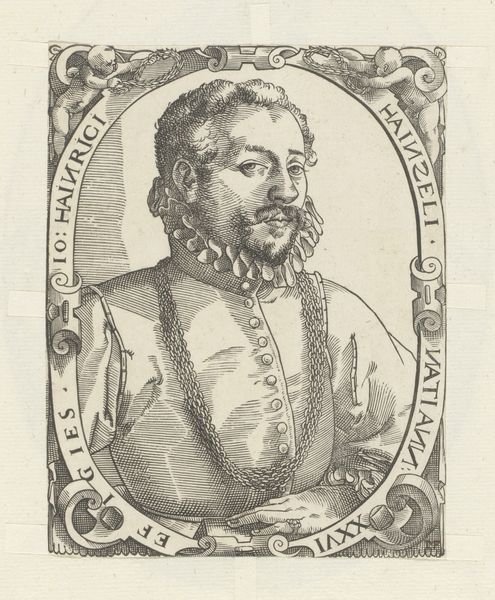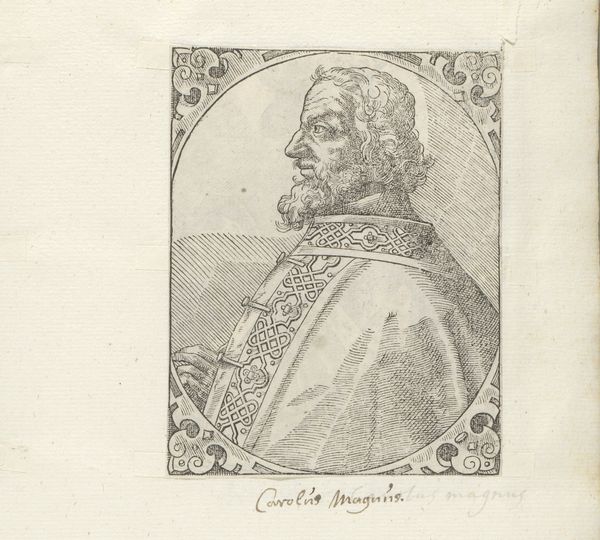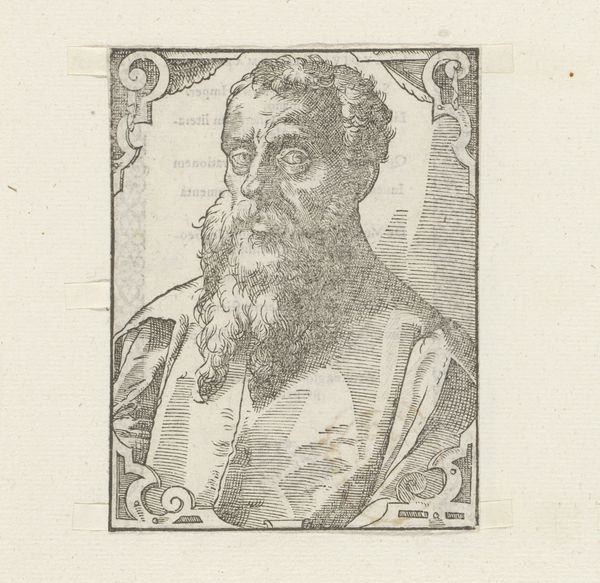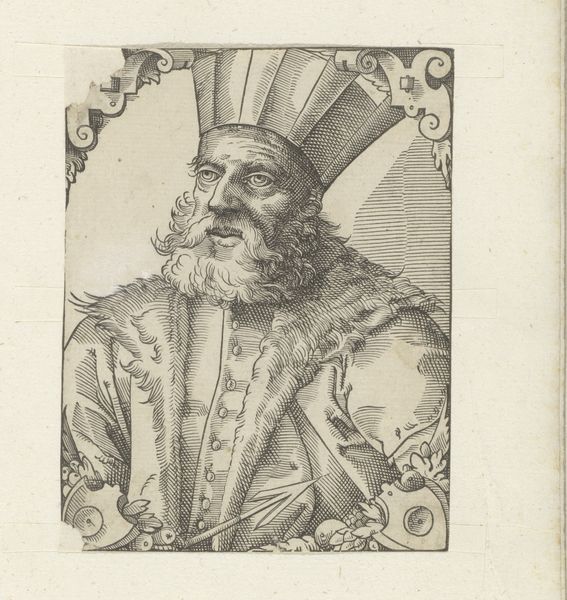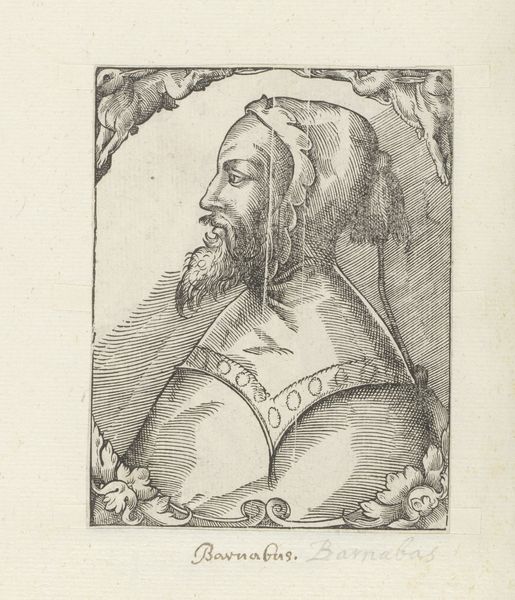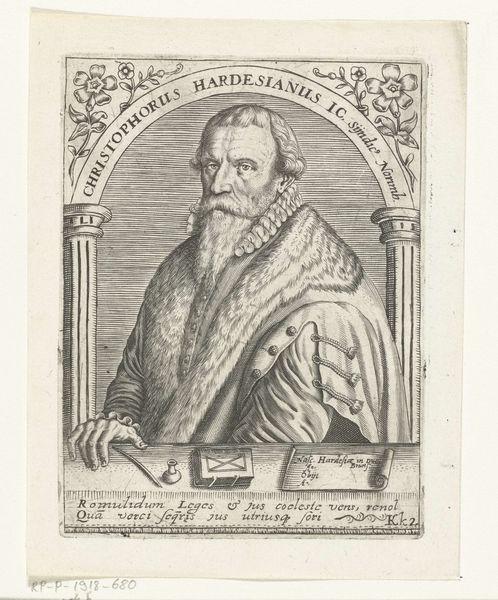
drawing, print, engraving
#
portrait
#
drawing
# print
#
old engraving style
#
mannerism
#
engraving
Dimensions: height 108 mm, width 82 mm
Copyright: Rijks Museum: Open Domain
Curator: Looking at this portrait, what strikes you first? Editor: The gaze, definitely. The way he's turned away, but with a very penetrating, thoughtful air. It feels… intensely private. Curator: It's a copperplate engraving, created sometime between 1549 and 1577. The title is "Portret van Ludovico Ariosto" -- Portrait of Ludovico Ariosto -- and it depicts the famous Italian poet, playwright and author of the renowned epic poem "Orlando Furioso." Editor: So, we're seeing a humanist giant. It’s fascinating how printmaking allowed these images to circulate, shaping the reputations of figures like Ariosto. Do we know who made this? Curator: The artist is anonymous, though its style suggests a strong familiarity with Mannerist printmaking traditions of the late 16th century. It circulated fairly widely after his death, bolstering his reputation posthumously. Editor: Mannerism emphasizes stylized form, and here you see it in the ornamental frame, a contrast to Ariosto’s realism, like a window onto a very real intellect. I am also curious about this posthumous promotion of his reputation. To what extent did prints like this influence readings of Ariosto’s poems and plays? Curator: Prints like this one absolutely affected his public image and reception. This image was probably integrated into editions of his work. Think about how it shaped assumptions around authorship. If you’re confronted with his likeness before engaging with his work, that will likely influence your interpretations of it. This particular likeness, circulated via engravings like this, became almost synonymous with his name. Editor: Yes! It highlights the intersection of art and politics, authorship and power, reminding us that even the image of a literary figure like Ariosto isn't neutral. It’s an orchestrated presentation meant to influence posterity. It makes me consider, too, the ethics of representing someone after they’re gone. What biases might be reflected, consciously or unconsciously, in this portrayal? Curator: An essential point. In thinking about its historical function, this image gives us much to consider in our present age of reproducibility and manufactured personas. Editor: Exactly, this print lets us ponder the complex relationship between visual culture, fame, and historical memory. Curator: Thank you. This examination, I trust, has offered a fresh lens through which to contemplate the artwork's social and cultural import.
Comments
No comments
Be the first to comment and join the conversation on the ultimate creative platform.
